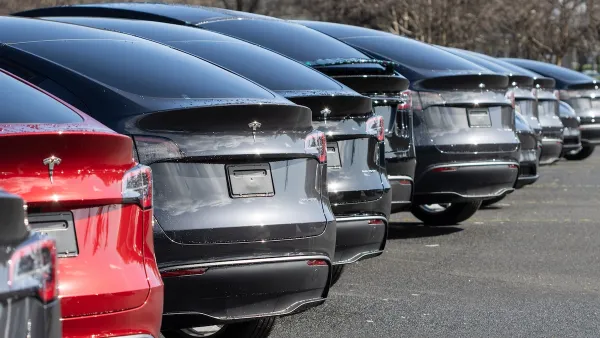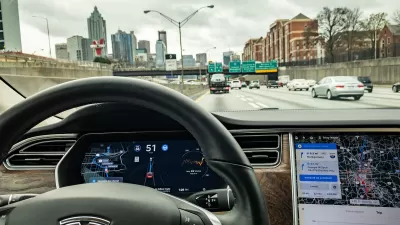While dozens of companies are following state-mandated regulations for autonomous vehicle testing, Tesla has managed to avoid the same rules. It's time for regulators to step in, according to the Los Angeles Times Editorial Board.

An editorial in the Los Angeles Times calls on state and federal authorities to step in to regulate Tesla's 'self-driving' vehicles, which have managed to evade DMV regulations during testing and deployment thanks to the company's claim that the "full self-driving mode" is "intended for use with a fully attentive driver who has their hands on the wheel." Meanwhile, Tesla's marketing and claims from its own CEO give consumers the impression that the cars can indeed drive themselves with little or no human intervention. To date, Teslas using the company's earlier Autopilot function have killed one person and injured 17 others.
While Tesla follows the Silicon Valley ethos of 'move fast and break things,' dozens of other companies experimenting with self-driving technology on California roads are following a reasonable set of rules. They must have a trained and certified test driver behind the wheel and send the DMV regular reports on crashes as well as incidents in which the human driver had to take over to avoid a crash.
According to a California DMV spokesperson, "Tesla informed the agency that 'Full Self-Driving' cars are in a different category, known as 'level 2,' that incorporates more common driver-assistance tools like automatic steering and cruise control but still require attention from a human driver."
The op-ed argues that the company can't have it both ways: Tesla's vehicles should be forced to follow the same rules as everyone else before more people are injured or killed.
FULL STORY: Editorial: Slam the brakes on Tesla’s self-driving madness

Planetizen Federal Action Tracker
A weekly monitor of how Trump’s orders and actions are impacting planners and planning in America.

Maui's Vacation Rental Debate Turns Ugly
Verbal attacks, misinformation campaigns and fistfights plague a high-stakes debate to convert thousands of vacation rentals into long-term housing.

Restaurant Patios Were a Pandemic Win — Why Were They so Hard to Keep?
Social distancing requirements and changes in travel patterns prompted cities to pilot new uses for street and sidewalk space. Then it got complicated.

In California Battle of Housing vs. Environment, Housing Just Won
A new state law significantly limits the power of CEQA, an environmental review law that served as a powerful tool for blocking new development.

Boulder Eliminates Parking Minimums Citywide
Officials estimate the cost of building a single underground parking space at up to $100,000.

Orange County, Florida Adopts Largest US “Sprawl Repair” Code
The ‘Orange Code’ seeks to rectify decades of sprawl-inducing, car-oriented development.
Urban Design for Planners 1: Software Tools
This six-course series explores essential urban design concepts using open source software and equips planners with the tools they need to participate fully in the urban design process.
Planning for Universal Design
Learn the tools for implementing Universal Design in planning regulations.
Heyer Gruel & Associates PA
JM Goldson LLC
Custer County Colorado
City of Camden Redevelopment Agency
City of Astoria
Transportation Research & Education Center (TREC) at Portland State University
Jefferson Parish Government
Camden Redevelopment Agency
City of Claremont





























